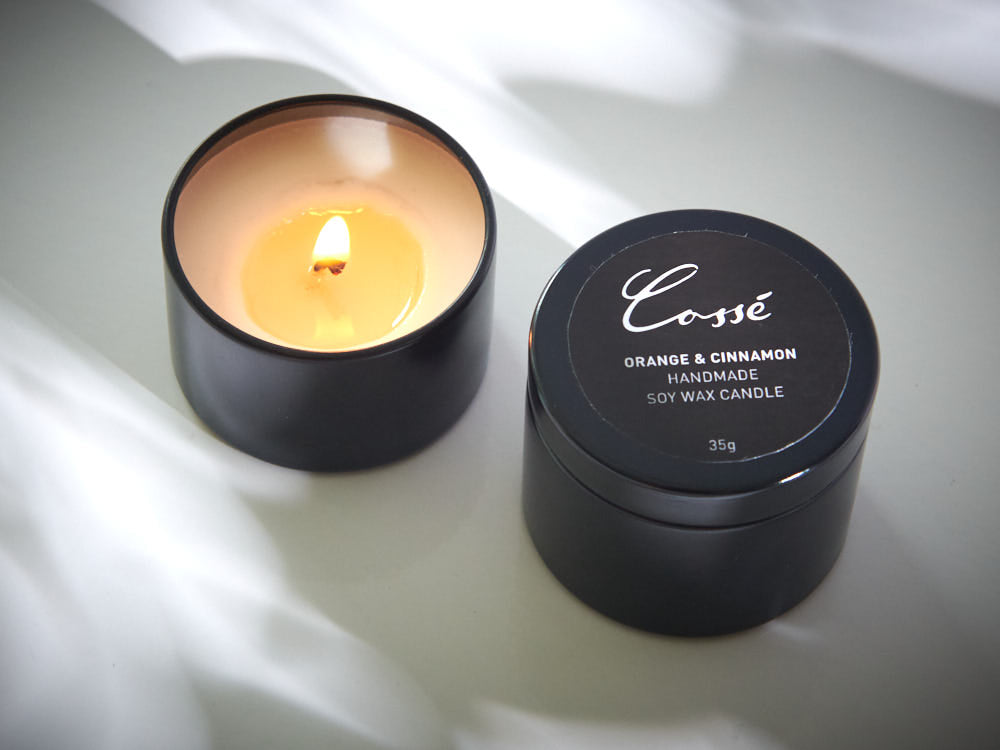Discover the Magic of Crystal Soy Candles and Home Fragrance
From Wick to Wax: Understanding the Chemistry Behind Soy Wax Candles and Their Environmental Impact
As we brighten our rooms with the warm glow of candle lights, there exists a realm of complex chemistry behind the relatively easy act of lighting a soy wax candle light. Join us as we unwind the clinical intricacies behind soy wax candles and explore their implications on our environment.
Soy Wax Vs. Paraffin Wax
When comparing soy wax and paraffin wax for candle production, it is important to recognize the unique features and benefits of each material. Soy wax is a natural, renewable resource originated from soybean oil, making it biodegradable and green - candles. On the other hand, paraffin wax is a by-product of oil refining, which raises issues about its ecological impact and sustainability
Soy wax candle lights shed cleaner and release less residue compared to paraffin wax candle lights, making them a much healthier selection for interior air top quality. In addition, soy wax has a lower melting point, allowing for a longer-lasting candle that spreads scent extra properly. Paraffin wax, on the various other hand, has a tendency to shed faster and less cleanly, potentially releasing damaging chemicals right into the air.
From a sustainability viewpoint, soy wax is preferred for its biodegradability and sustainable sourcing, aligning with the expanding customer preference for eco mindful products. While paraffin wax has actually been a typical option in candle making as a result of its cost and simplicity of use, the change towards environmentally friendly alternatives like soy wax is gaining energy in the market.
Chemical Composition of Soy Wax

Burning Refine in Soy Candles
The chemical structure of soy wax directly influences the combustion process in soy candle lights, impacting aspects such as shed time, scent release, and environmental influence. When a soy candle is lit, the heat from the fire melts the wax near the wick. This liquid wax is after that created the wick as a result of capillary activity. As the fluid wax gets to the flame, it undertakes and evaporates combustion. The burning process involves the vaporized hydrocarbons in the wax responding with oxygen in the air to produce warmth, light, water vapor, and co2.
The burning performance of soy candles is affected by the pureness of the soy wax and the top quality of the wick. Furthermore, soy wax candles have a lower ecological influence compared to paraffin candles due to their sustainable and biodegradable nature.

Environmental Benefits of Soy Wax

Considered a lasting alternative have a peek at these guys to standard paraffin wax, soy wax supplies noteworthy ecological advantages that make it a prominent selection among eco-conscious consumers. Soy wax burns cleaner and generates less soot than paraffin wax, contributing to far better indoor air high quality and lowering the requirement for cleansing and upkeep. Overall, the environmental advantages of soy wax straighten with the growing demand for environmentally friendly and lasting items in the market.
Recycling and Disposal Factors To Consider
Reusing and proper disposal of soy wax candle lights play an important function in maintaining environmental sustainability and reducing waste in homes and neighborhoods. When it comes to recycling soy wax candle lights, the very first step is to guarantee that the candle has burned entirely.

In terms of disposal, if recycling is not an alternative, soy wax candle lights are eco-friendly and can be securely dealt with in many household waste systems. However, it is constantly recommended to check with local reusing centers or waste management services Go Here for particular standards on candle disposal to guarantee appropriate handling and environmental management.
Final Thought
In conclusion, the chemistry behind soy wax candles discloses their ecological advantages over paraffin wax candles. Soy wax, acquired from soybean oil, burns cleaner and produces less residue when contrasted to paraffin wax.
When contrasting soy wax and paraffin wax for candle making, it is crucial to understand the unique features and benefits of each material (candles).Soy wax candles burn cleaner and discharge much less residue compared to paraffin wax candles, making them a healthier option for interior air quality.Taken into consideration a sustainable option to conventional paraffin wax, soy wax offers noteworthy environmental advantages that make it a preferred choice among eco-conscious consumers. Soy wax burns cleaner and creates less soot than paraffin see it here wax, adding to better indoor air quality and decreasing the need for cleaning and maintenance.In conclusion, the chemistry behind soy wax candles discloses their ecological benefits over paraffin wax candle lights